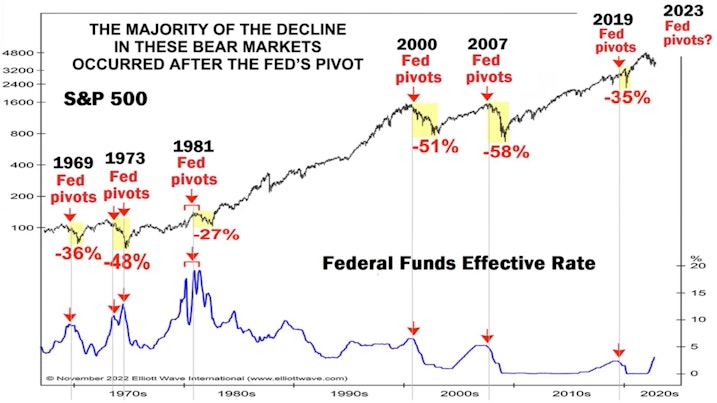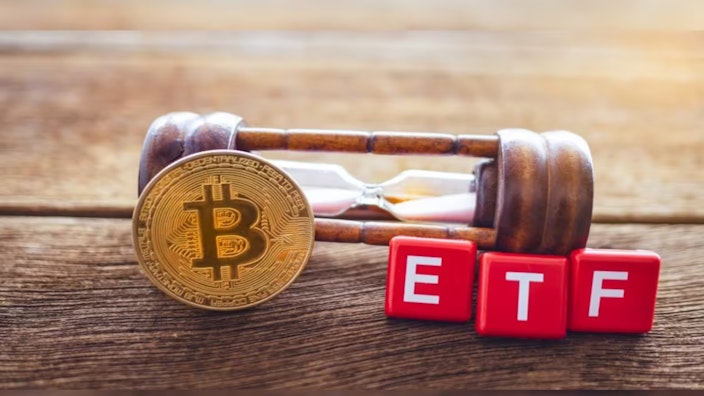What is Cantillon Effect? (Top Ways it Impacts You in 2024)
In this guide, we examine the Cantillon Effect, answering the question: 'How does Bitcoin act as a counter to uneven inflationary impacts? '



The Cantillon Effect describes how inflation impacts people unequally and helps insiders get a leg up on ordinary folks. Here is a quick summary of how it works:
New money is injected into the economy by the government.
Certain groups (e.g., banks, Wall Street, etc.) get access to this money first.
These groups gain an arbitrage opportunity — they’re able to spend money before prices increase across society.
How the Cantillon Effect Happens
The Fed prints money to boost the economy.
That money goes from central banks to private banks to Wall Street to regular folks.
Insiders early in that chain get to spend the money first, before inflation takes hold, and thus get to acquire goods and services at a discounted rate.
How Bitcoin Helps
Bitcoin has a hard cap fixed supply.
This returns scarcity to the monetary system since the government can’t print more of it.
As a result, savings in Bitcoin are able to outpace the rate of monetary inflation.
Bitcoin’s Reverse Cantillon Effect
As the government keeps printing money, Bitcoin becomes a refuge.
Bitcoin lets you opt-out of unfair fiat currency systems.
Bitcoin’s limited supply creates, in effect, the opposite of the Cantillon Effect.
The Cantillon Effect explains the unequal impact of inflation. When new fiat money is created, it moves from central banks to private banks, then to Wall Street, and finally to regular citizens. This lag time between money printing and inflation affects the economy differently.
Lag Time Advantage: Banks and Wall Street insiders can purchase goods and assets before prices rise, acquiring them at a discounted rate.
Impact on Citizens: Ordinary people end up paying higher prices, making inflation a regressive tax on regular citizens. Those who are less “connected” suffer financially, while banks and asset owners gain an advantage.
So, what’s this got to do with Bitcoin? Unlike conventional fiat currencies, Bitcoin’s value isn’t tied to government printing. Instead, it arises organically from increased purchasing power, similar to the wealth effect.
Wealth Effect: This behavioral economic theory suggests that people spend more as the value of their assets rises.
In fact, Bitcoin offers a Reverse Cantillon Effect. As capital enters the market, its market cap surges more than 1:1. For instance, in 2021, Bank of America estimated a 107x increase in Bitcoin value during bullish market periods. Watch this YouTube video to learn more.
By understanding these dynamics, you can see how Bitcoin might serve as a hedge against the traditional Cantillon Effect, offering a more equitable financial landscape.
What happens when governments increase spending? Newly printed money emerges from central banks and enters the economic system through one of these mechanisms:
Government deficit spending
Quantitative easing (QE)
Governments run into fiscal deficits when they spend more than they take in from taxes and other revenues. This can have both positive and negative impacts:
Positive Impact: Temporarily boosts a sluggish economy by giving individuals more money to buy goods/services and invest in the market.
Negative Impact: May create long-term deficits that are detrimental to economic growth and stability.
Quantitative easing is a monetary policy strategy central banks use to:
Reduce interest rates.
Increase the supply of money, which can lead to monetary debasement.
Drive more lending to consumers and businesses.
The biggest problem with quantitative easing is the risk of inflation. When a central bank prints new currency, the total supply of dollars increases, causing inflation.
When the government spends, it does so by borrowing and running a higher deficit instead of raising taxes. As of March 17th, 2024, the U.S. government is currently running a debt of $34.51 trillion, which continues to grow.
Why should we care if the government has high debt? The following steps explain…
To lower interest rates or bail out financial crises, the Fed performs a kind of financial alchemy (or financialization) by printing money and acquiring more bonds. As bond prices grow, interest rates and yields come down, enabling more businesses and people to borrow money.
This quantitative easing policy fills the pockets of Wall Street banks with fresh cash, eagerly awaiting investment. With interest rates at an all-time low, the wealthy elite and businesses seize the opportunity to expand operations or acquire appreciating assets.
As these new dollars circulate through the economy, they silently increase the prices of life’s essentials. Average folks find themselves priced out of asset ownership (e.g., buying a home or car), while inflation’s relentless surge makes investing more challenging. Ordinary people struggle to afford increasing prices, finding themselves paying $8 for a dozen eggs. Ugh!
The result? Wealth inequality! Understanding these steps helps to see the broader impact of the Cantillon Effect on our society.
Some argue for increased government intervention as a solution to that. But remember, the government has two central policies, and both involve spending.
This relentless money printing continues to fan the flames of instability is how the Cantillon Effect works.
How the Cantillion Effect Looks

Escape the Cycle By Saving in Bitcoin
It’s a doom loop we keep witnessing in the American economic system…
We are addicted to new money: The system is currently leveraged to the eyeballs. Without this money printing, the system would collapse spectacularly.
Debt Spirals: Debt begets more debt. And with debt levels this high, the Federal Reserve is only one small emergency away from another round of quantitative easing, starting the entire Cantillon process over again.
Luckily, Bitcoin is here to rescue us…
NGU (Number Go Up): As the money supply increases exponentially, asset prices will too. Bitcoin may be the younger generations’ only hope to achieve a secure financial future.
Final Thoughts
The impact of the Cantillon Effect needs to stay top-of-mind as we experience additional increases in the money supply. A potential Federal Reserve pivot moment is near, which means the money printer will likely start up again.
And when that happens, remember that inflationary effects will not be distributed evenly.

Elliot Waves International
It’s crucial to keep an eye on where new money enters the system. During quantitative easing (QE), new money flows into the system through Wall Street. Now, with Spot Bitcoin ETFs available to Wall Street traders, Bitcoin is increasingly becoming a sponge for this excess liquidity.
Record-Breaking Launch: Spot Bitcoin ETFs shattered records on their first day of trading, with over $4.6 billion in trading volume, the highest ever for an ETF launch.
Major Inflows: Spot Bitcoin ETFs from BlackRock and Fidelity Investments saw more than $2 billion of net inflows during their first 12 trading days. Meanwhile, the Grayscale Bitcoin Trust experienced more than $5 billion in net outflows.
This excess liquidity might shift from bonds into Bitcoin investment tools, like Bitcoin IRAs and spot-Bitcoin ETFs. Stay updated on all things Bitcoin ETF with our Bitcoin Daily Show, hosted by Dante Cook.
Understanding the Cantillon Effect reveals the power of Bitcoin’s reverse Cantillon Effect. As the government continues printing money, Bitcoin becomes a refuge, effectively becoming “true money” that allows us to opt out of unfair fiat currency systems. In a world devoid of monetary scarcity, Bitcoin’s limited supply leverages the Cantillon Effect, enabling us to benefit from it.
If you enjoyed reading this, check out our article about the Byzantine Generals Problem.
Swan is a leading Bitcoin financial services company with more than 120,000 clients and 170 employees, operating globally. Established in 2019, Swan helps individuals and institutions to understand and invest in Bitcoin. The Swan app simplifies Bitcoin purchases with instant and recurring buys. Swan IRA provides a tax-advantaged solution for saving Bitcoin in retirement accounts.
For HNWIs and businesses, Swan Private provides white-glove service for large purchases, treasury solutions, and employee Bitcoin benefits. With Swan Vault, clients can easily custody their own Bitcoin with peace of mind. Financial advisors trust Swan Advisor for client Bitcoin allocations, backed by world-class custody and educational content.
Swan Managed Mining provides clients with fully segregated and dedicated mining operations, catering to their unique requirements, opportunities, and strategic advantages. Swan prides itself on exceptional client service, making Bitcoin accessible to all. For more information, please visit swan.com.
Sign up to start saving Bitcoin
Buy automatically every day, week, or month, starting with as little as $10.
Mickey Koss became a freelance writer in the Bitcoin space in an attempt to build a proof of work portfolio for when he left the Army. He graduated from West Point with a degree in Economics before serving in the Army for nearly a decade. He became orange pilled in graduate school and is now a regular contributor to Forbes, Bitcoin Magazine, and Bitcoin News. He’s been on popular podcasts such as BTC Sessions’ Why Are We Bullish, and is a regular on Café Bitcoin.
Drew, a class of 2013 Bitcoiner, is a Research Analyst for Swan Bitcoin.
He has worked in institutional VC/PE, FinTech, and DLT consulting for over six years. He also brings over twelve years of experience working with national nonprofits and start-ups in education and software development in several leadership roles.
Matt Ruby is a seasoned content writer helping educate million worldwide about Bitcoin for Swan. Matt work with tech companies to create words, videos, and other content that makes them seem human. He specializes in taking boring/drab tech topics and making them interesting, educational, funny, and accessible to regular people.
More from Swan Signal Blog
Thoughts on Bitcoin from the Swan team and friends.


Epoch Five — Big League Bitcoin

By Tomer Strolight
Block 840,000 has come and gone. With it, came Bitcoin’s fourth halving, cutting the issuance of new coins to 3.125 per block. Welcome to Epoch V. What awaits us?


An Open Letter to Ann Barnhardt
By Arman the Parman
I decided to write a letter, then made it an open letter, to Ann Barnhardt.


Best Bitcoin ETF Fees: Lowest to Highest (May 2024)

By Matt Ruby
In this guide, we analyze and present the top 10 Bitcoin ETFs with the lowest fees for cost-effective investing.
